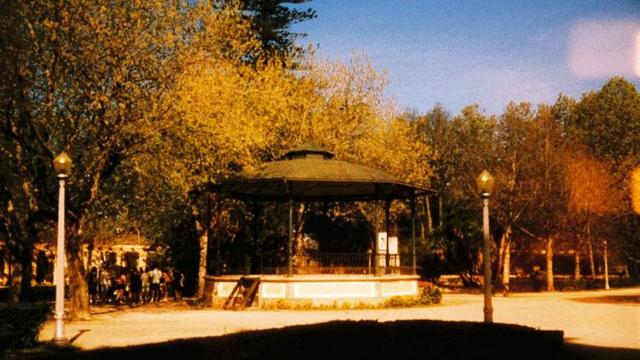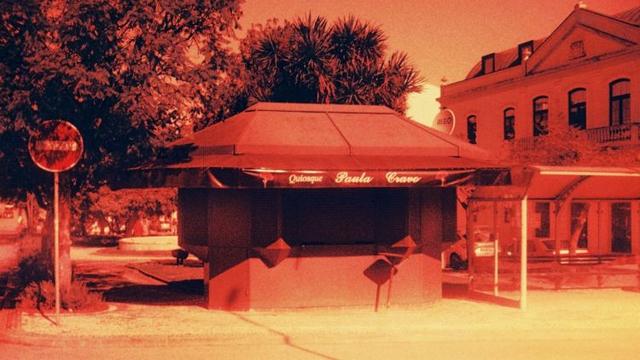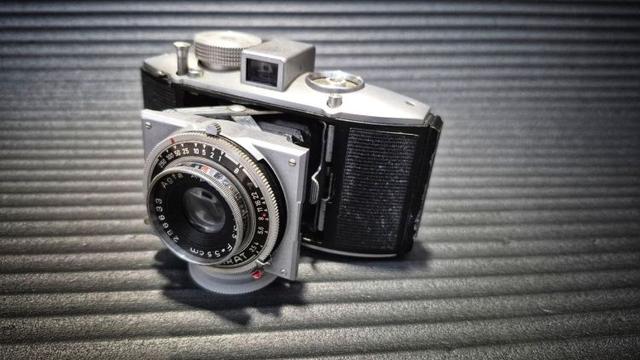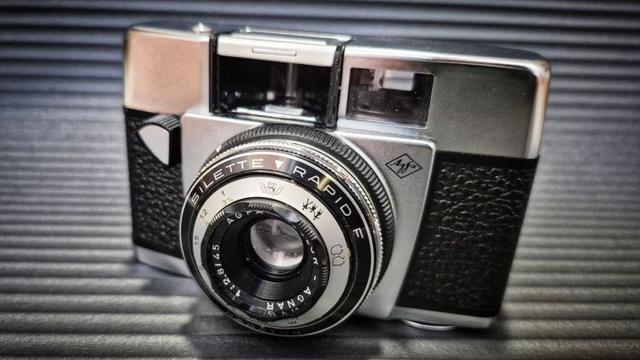Further down the rabbit hole: The Agfa Karat rapid film camera
Back in September of 2024, I picked up my first Rapid film cameras, some cheap Agfa Iso-Rapids. These basic, Agfa Clack-like cameras were supposed to be the end of it, but then I decided that I needed a few more Rapid canisters — which led to a couple more Agfa Iso-Rapids and the Ricoh 35K Rapid — and soon after I came across the Golden Wonder, my precious little Welta Penti II, that I decided would be perfect for the Frugal Film Project this year
Surely that was enough, I thought. But then I discovered there was a Rapid camera in the Lomo Smena range, and so was added the Lomo Smena SL to my rapidly growing (pun intended) sub-collection. And just last week I added another Agfa Iso-Rapid and a Agfa Silette Rapid F camera because I wanted more canisters and it’s cheaper to get a camera with a canister in it than buy the canister alone. And that’s it, I have enough now, right? After all, I’m only using my Rapid film cameras for the Frugal Film Project, I don’t need any more, right?
Wrong, I was browsing around the ‘Bay a few days ago. Not looking for anything, really, just at my ‘watched’ items: there’s a broken 3D Nimslo camera that is way overpriced, and a couple of first generation Lomo Smena Rapid cameras that I’m keeping an eye on just in case my SL doesn’t deliver the goods. And then, way down the listing under the ‘More Like This’ tab, was a listing for an ‘AGFA KARAT APOTAR 1:3.5 F=55mm’, for the not unreasonable price of 18€ plus shipping from Germany.
It was described as, ‘Used and functional item with few to normal signs of wear. These are signs of use which arise in the context of normal or careful use,’ and the condition was described as, ‘ [Category] C … strong used and full working.’ There were plenty of images, including one close up through the back of the camera hinting that the lens was nice and clean. Not too bad for a 1940s era camera. Did I mention that it was 18€?
But did I really want an original Karat camera? This was from the age before Agfa rejuvenated their Karat system as Agfa Rapid for the 1960s market to compete with Kodak’s instamatic film cameras. So yes, I did.
As a bit of background, in the late 1930s Agfa began production of their Agfa Karat film cameras, a range of cameras that used 35mm film but instead in a proprietary spoolless metal canister, not the 35mm cassette that Kodak and many other manufacturers were using. These were 12-exposure cassettes and in each camera two canisters were used, one which held the unexposed film and another to receive exposed film that was simply pushed into it.
I made an attempt to date this camera, but the best I could manage that it was post-WW2. The pre-War Agfa Karat, which was the series model 3.5, was introduced in 1939 and featured a Compur Rapid shutter and a four-element Solinar 50mm f3.5 lens. In 1941, because of the Second World War, camera production was stopped and did not resume until about 1946. The post-War model 3.5 Agfa Karats featured an Apotar three element 55mm f3.5 lens and a Prontor shutter. According to CJ.s Classic Cameras, the serial number of HH5820 suggests that this Agfa Karat (3.5 v2) was the penultimate Agfa Karat model made, and since the Agfa started making Karats that used 35mm film cassettes and not Rapid canisters from 1948, it’s likely that my particular model was from around this time.
The first cameras were nice looking art deco style cameras with slightly rounded bodies, but in the pre-War years Agfa simplified the bodies and post-War released an Agfa Karat with a cheaper lens, the Agfa Apotar 3.5/55 three element lens, which is the one I have. The Karat has aperture settings from f3.5 to f32, and a range of shutter speeds from 1s to 1/250s, plus B. By around 1948, with the release of the Karat 36 model, Agfa had abandoned the Karat film system in favour of using regular 35mm cassettes, and they were not to make cameras that used canisters until the 1960s, with the renamed Rapid system.
I was a little concerned that the Agfa Karat was in worse condition than the seller had listed, for example, what if the lens was gummed up and it wouldn’t focus, but when it arrived it was a little scuffed up but in sound mechanical condition. The lens, as it turned out, was not as clean as I had hoped, with a bit of fungus and haze on the elements. This will certainly need some attention before I can take it out.
What I was thrilled to find, though, was a Rapid canister inside the camera. No, that’s wrong. It was not a Rapid canister from the 1960s onwards, but a genuine Karat canister from the 1940s. It’s in lovely condition, with a matt black coating and a smooth finish to the touch. I’m not sure if I should consider this an addition to my collection of Rapid canisters. I reckon that if I try to add film to it that film might get a little scratched (I’m going to try it, though).
Introducing and trying out the Agfa Karat was supposed to be all one post, but I reckon that I have a little bit more work to do with this camera than planned. One thing that I most certainly will have to do is to clean the lens, so the next post will be a summary of the cleaning of the camera and the lens and the first test ‘in the wild’ with the Agfa Karat.
If you are on Mastodon, you can now follow this blog directly. Just go to Mastodon and follow my WordPress account at @keithdevereux.wordpress.com. All new posts will be automatically updated to your timeline on Mastodon.
#Agfa #AgfaKarat #Canister #Cassette #Experimental #Karat #Rapid #RapidFilm #Vintage





